Why is the product not durable?
With the rapid development of the mobile power industry, more and more people are starting to purchase a mobile power supply with sufficient capacity to carry out convenient charging operations for their mobile phones, MP3s or tablets. However, due to the special nature of mobile power and the user's low awareness of mobile power, we can often hear that many people are complaining that their mobile power is not as durable as it looks. This in the end is why? In this issue of ZOL Mobile Power, we will answer why why mobile power is not as durable as it looks.

The first thing to note is that what we said in this article "not durable" means that the actual number of uses of mobile power (such as charging for mobile phones) does not appear to be as much. In other words, a mobile power supply with a capacity of 4000 mAh cannot fully charge twice for a mobile phone with a 2000 mAh battery. To understand this issue, we also need to start from the working principle of mobile power. This article mainly explains why the actual output capacity of a mobile power supply is smaller than the capacity marked on the packaging.
Most mobile power supplies on the market today are designed to simulate the parameters of a computer's USB interface. However, a typical voltage of a lithium ion or lithium polymer cell as a power storage unit in a mobile power source is 3.7V. In order to achieve the 5V voltage output of an ordinary USB interface, there is a conversion process that will move the internal cells of the power source. The electrical energy is converted into the 5V standard voltage that we need to use, which is the difference between capacity and capacity that we need to understand below.
This "capacity" is not "capacity"
We know that the most important parameter of mobile power is its capacity, which is an important standard for many mobile power vendors to promote their products. However, for consumers, when selecting a mobile power source, it is easy to mistake its marked capacity for real capacity. Let's take a look at the difference between these two parameters that are "capacity".
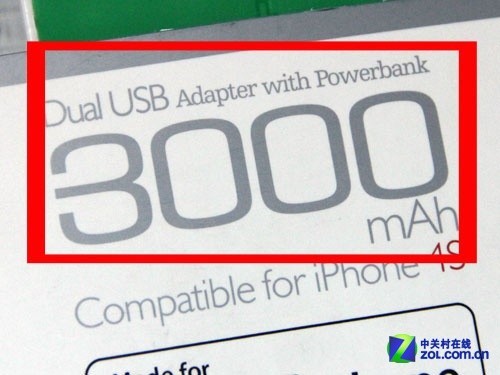
The capacity we often see on most mobile power packs

The capacity marked on the internal cell of the mobile power supply
Because there is no more standard in the mobile power industry, most mobile power manufacturers will directly label the internal battery capacity directly on the product packaging. But it is worth noting that this capacity is different from the capacity that many consumers understand that they can actually use.
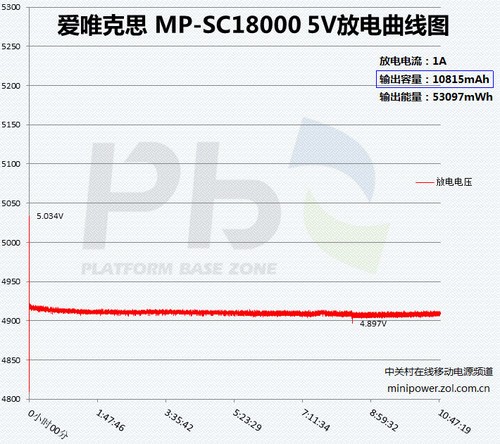
Actual output capacity test
In addition to the capacity value of the batteries used by the manufacturer, there is also a capacity parameter which is the actual output capacity value of this mobile power supply. The difference between the two is that the capacity value marked by the manufacturer is the capacity of the battery, and the actual output capacity is the capacity value that most consumers think. So is this situation in the end not what we call a virtual standard? Actually not. Usually we say that the problem of virtual power of mobile power refers to the fact that the actual capacity of its internal batteries is less than the capacity value marked on the packaging of products. For the current mobile power supply, its actual output capacity must be smaller than the marked cell capacity value.
Seeing here, some people may ask: Why does the manufacturer not directly mark the actual output capacity of the product directly on the product packaging? This is also the issue that we will discuss with you below.
Lack of uniform industry standards
Since it is an emerging industry, for mobile power, from the production, manufacturing and inspection processes, at present, the country does not have a set of industry norms and standards related to it. There are many factors that affect the actual output capacity, so the current mobile power supply manufacturers can only explain the capacity value of the product through the method of marking on the packaging.

Various specifications and certifications
Because there is no set of industry standards and specifications for mobile power, it is inevitable that some consumers will have some misunderstandings about the capacity marked on the packaging of mobile power.

lithium polymer battery
Since the charging characteristics of lithium ion or lithium polymer battery are divided into several stages such as constant current, constant voltage, and turbulent flow in most cases, even if the same lithium battery has different charging parameters when the power is different, these many factors Mixed together will affect the actual use of mobile power.
Different and different loads
In addition to the many factors mentioned above in the mobile power supply, there is another very important factor that will directly affect the number of users in practical use - load. The load is the equipment that we need to charge with a mobile power source, such as a mobile phone, MP3, or tablet. So why are the charged devices also affect the number of mobile power usage?
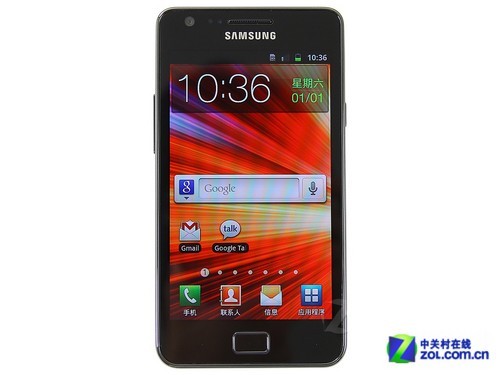
The built-in charging circuit in mobile phones is a problem that many people ignore
When we charge a mobile phone or other device, it is not always overlooked that there is a certain loss inside the charged device itself. Since the current mobile phone, MP3 and other devices are all integrated with a charging circuit, so different internal load devices Charging circuit efficiency is not the same, plus charging will inevitably be used and other conventional operations, so to a certain extent will affect the actual use of mobile power.
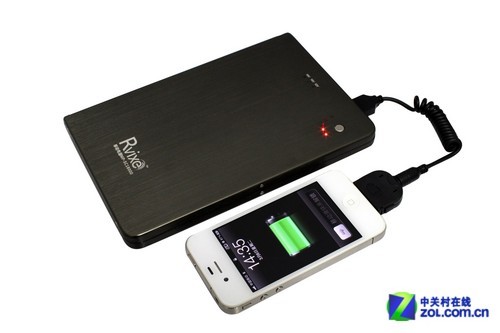
Mobile Power for Charging Mobile Phones
Therefore, in the actual use of the mobile power, due to the different charging devices used by the user, it will inevitably result in a completely different experience. This situation for us, in fact, can also be seen as a helpless, even if the company introduced a set of more standardized testing standards, then the industry's unified implementation of capacity, it is still unable to provide accurate guidance for consumers .

Mobile power charging process
Therefore, for different types of load devices (charged devices), the use of the same mobile power in different users' hands is quite different. After all, the power of the internal batteries of the mobile power supply needs to undergo two conversions (the internal circuit of the mobile power supply and the internal circuit of the load device), and finally, the internal battery of the load device can be charged.
ZOL mobile power capacity evaluation standard
I believe that after seeing this, you have already walked out of the misunderstanding of mobile power capacity. But for the average consumer, when selecting a mobile power source, how can it be more quickly identified whether the capacity value marked on the packaging of the product can meet their daily use needs? In order to meet the requirements of most consumers to determine the actual output capacity and life time of each mobile power supply or the number of uses more intuitively and quickly, we use the constant current discharge method in the current series of evaluation standards of the ZOL mobile power channel. Each mobile power source performs actual output capacity testing.
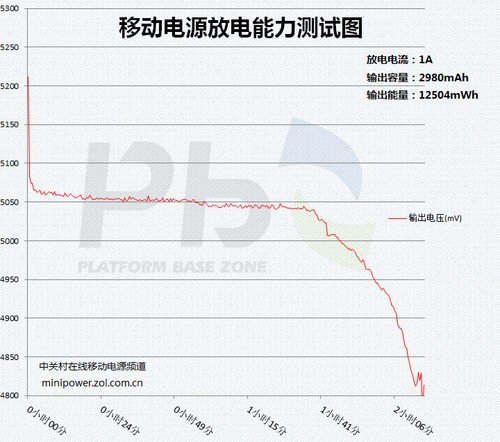
Mobile power discharge ability test chart
Currently, in addition to the current actual discharge voltage curve and voltage fluctuations, the current PBZone mobile power evaluation standard also indicates the actual output capacity of the mobile power supply in the upper right corner of the picture, that is, the nominal output parameter. Below (5V/1A in the figure above), the constant current discharge method is used to calculate the total capacity that it can actually output. In addition, the discharge time scale is also marked at the bottom of the picture. It is also the total battery life after constant current discharge under the nominal output parameter.
It is worth noting that devices using lithium-ion or lithium-polymer batteries undergo several different charging stages, and the discharge parameters are different for each charging stage. Simply put, when we use a mobile power source to charge a mobile phone or other device, the output port of the mobile power supply does not continuously provide a current output of 1A. Therefore, in order to more intuitively demonstrate the actual discharge capacity of each mobile power supply, we will allow the tested mobile power supply to continuously work under the nominal output state. However, when the user actually uses the battery, the battery life and charging times are required. Greater than the data we tested.
Summary: In summary, for the mobile power capacity problem, in addition to the need for each manufacturer to clearly mark the “capacity†as the cell capacity on the product packaging, for most consumers, in the purchase of mobile power At the same time, it should also be more appropriate to the actual choice of product capacity. Only more manufacturers are more regulated in product parameter marking, and consumers’ awareness of mobile power is constantly increasing. Only then can most consumers misunderstand and question mobile power capacity.
In short, for a mobile power supply, it currently has the following characteristics:
â–¶The capacity marked on the packaging of the mobile power supply is not equal to the capacity that the user can actually use. â–¶ The actual output capacity of the mobile power source is affected by many factors such as the conversion efficiency, the charging equipment and the charging circuit of the load and so on. The standard means that the actual capacity of the internal battery is less than the capacity value marked by the manufacturer.
With the rapid development of the mobile power industry, more and more people are starting to purchase a mobile power supply with sufficient capacity to carry out convenient charging operations for their mobile phones, MP3s or tablets. However, due to the special nature of mobile power and the user's low awareness of mobile power, we can often hear that many people are complaining that their mobile power is not as durable as it looks. This in the end is why? In this issue of ZOL Mobile Power, we will answer why why mobile power is not as durable as it looks.

The first thing to note is that what we said in this article "not durable" means that the actual number of uses of mobile power (such as charging for mobile phones) does not appear to be as much. In other words, a mobile power supply with a capacity of 4000 mAh cannot fully charge twice for a mobile phone with a 2000 mAh battery. To understand this issue, we also need to start from the working principle of mobile power. This article mainly explains why the actual output capacity of a mobile power supply is smaller than the capacity marked on the packaging.
Most mobile power supplies on the market today are designed to simulate the parameters of a computer's USB interface. However, a typical voltage of a lithium ion or lithium polymer cell as a power storage unit in a mobile power source is 3.7V. In order to achieve the 5V voltage output of an ordinary USB interface, there is a conversion process that will move the internal cells of the power source. The electrical energy is converted into the 5V standard voltage that we need to use, which is the difference between capacity and capacity that we need to understand below.
This "capacity" is not "capacity"
We know that the most important parameter of mobile power is its capacity, which is an important standard for many mobile power vendors to promote their products. However, for consumers, when selecting a mobile power source, it is easy to mistake its marked capacity for real capacity. Let's take a look at the difference between these two parameters that are "capacity".

The capacity we often see on most mobile power packs

The capacity marked on the internal cell of the mobile power supply
Because there is no more standard in the mobile power industry, most mobile power manufacturers will directly label the internal battery capacity directly on the product packaging. But it is worth noting that this capacity is different from the capacity that many consumers understand that they can actually use.

Actual output capacity test
In addition to the capacity value of the batteries used by the manufacturer, there is also a capacity parameter which is the actual output capacity value of this mobile power supply. The difference between the two is that the capacity value marked by the manufacturer is the capacity of the battery, and the actual output capacity is the capacity value that most consumers think. So is this situation in the end not what we call a virtual standard? Actually not. Usually we say that the problem of virtual power of mobile power refers to the fact that the actual capacity of its internal batteries is less than the capacity value marked on the packaging of products. For the current mobile power supply, its actual output capacity must be smaller than the marked cell capacity value.
Seeing here, some people may ask: Why does the manufacturer not directly mark the actual output capacity of the product directly on the product packaging? This is also the issue that we will discuss with you below.
Lack of uniform industry standards
Since it is an emerging industry, for mobile power, from the production, manufacturing and inspection processes, at present, the country does not have a set of industry norms and standards related to it. There are many factors that affect the actual output capacity, so the current mobile power supply manufacturers can only explain the capacity value of the product through the method of marking on the packaging.

Various specifications and certifications
Because there is no set of industry standards and specifications for mobile power, it is inevitable that some consumers will have some misunderstandings about the capacity marked on the packaging of mobile power.

lithium polymer battery
Since the charging characteristics of lithium ion or lithium polymer battery are divided into several stages such as constant current, constant voltage, and turbulent flow in most cases, even if the same lithium battery has different charging parameters when the power is different, these many factors Mixed together will affect the actual use of mobile power.
Different and different loads
In addition to the many factors mentioned above in the mobile power supply, there is another very important factor that will directly affect the number of users in practical use - load. The load is the equipment that we need to charge with a mobile power source, such as a mobile phone, MP3, or tablet. So why are the charged devices also affect the number of mobile power usage?

The built-in charging circuit in mobile phones is a problem that many people ignore
When we charge a mobile phone or other device, it is not always overlooked that there is a certain loss inside the charged device itself. Since the current mobile phone, MP3 and other devices are all integrated with a charging circuit, so different internal load devices Charging circuit efficiency is not the same, plus charging will inevitably be used and other conventional operations, so to a certain extent will affect the actual use of mobile power.

Mobile Power for Charging Mobile Phones
Therefore, in the actual use of the mobile power, due to the different charging devices used by the user, it will inevitably result in a completely different experience. This situation for us, in fact, can also be seen as a helpless, even if the company introduced a set of more standardized testing standards, then the industry's unified implementation of capacity, it is still unable to provide accurate guidance for consumers .

Mobile power charging process
Therefore, for different types of load devices (charged devices), the use of the same mobile power in different users' hands is quite different. After all, the power of the internal batteries of the mobile power supply needs to undergo two conversions (the internal circuit of the mobile power supply and the internal circuit of the load device), and finally, the internal battery of the load device can be charged.
ZOL mobile power capacity evaluation standard
I believe that after seeing this, you have already walked out of the misunderstanding of mobile power capacity. But for the average consumer, when selecting a mobile power source, how can it be more quickly identified whether the capacity value marked on the packaging of the product can meet their daily use needs? In order to meet the requirements of most consumers to determine the actual output capacity and life time of each mobile power supply or the number of uses more intuitively and quickly, we use the constant current discharge method in the current series of evaluation standards of the ZOL mobile power channel. Each mobile power source performs actual output capacity testing.

Mobile power discharge ability test chart
Currently, in addition to the current actual discharge voltage curve and voltage fluctuations, the current PBZone mobile power evaluation standard also indicates the actual output capacity of the mobile power supply in the upper right corner of the picture, that is, the nominal output parameter. Below (5V/1A in the figure above), the constant current discharge method is used to calculate the total capacity that it can actually output. In addition, the discharge time scale is also marked at the bottom of the picture. It is also the total battery life after constant current discharge under the nominal output parameter.
It is worth noting that devices using lithium-ion or lithium-polymer batteries undergo several different charging stages, and the discharge parameters are different for each charging stage. Simply put, when we use a mobile power source to charge a mobile phone or other device, the output port of the mobile power supply does not continuously provide a current output of 1A. Therefore, in order to more intuitively demonstrate the actual discharge capacity of each mobile power supply, we will allow the tested mobile power supply to continuously work under the nominal output state. However, when the user actually uses the battery, the battery life and charging times are required. Greater than the data we tested.
Summary: In summary, for the mobile power capacity problem, in addition to the need for each manufacturer to clearly mark the “capacity†as the cell capacity on the product packaging, for most consumers, in the purchase of mobile power At the same time, it should also be more appropriate to the actual choice of product capacity. Only more manufacturers are more regulated in product parameter marking, and consumers’ awareness of mobile power is constantly increasing. Only then can most consumers misunderstand and question mobile power capacity.
In short, for a mobile power supply, it currently has the following characteristics:
â–¶The capacity marked on the packaging of the mobile power supply is not equal to the capacity that the user can actually use. â–¶ The actual output capacity of the mobile power source is affected by many factors such as the conversion efficiency, the charging equipment and the charging circuit of the load and so on. The standard means that the actual capacity of the internal battery is less than the capacity value marked by the manufacturer.
Birefringent Crystals include Calcite, alpha-BBO, undoped YVO4, quartz and MgF2 crystal, etc.
Alpha-BBO is transparent in deep UV range, and YVO4 has the high transmittance in the middle IR range.
Alpha-BBO, Calcite and undoped YVO4 have the big birefringence, which are suitable for polarizing prisms. The birefringence of Quartz and MgF2 is relatively small, which makes them the best materials for wave plates.
For more information, please Don't hesitate to contact us.
Birefringent Crystals
Birefringent Crystals,Birefringent Yttrium Vanadate Crystal,YVO4 Birefringent Crystal,Calcite Birefringent Crystal
Coupletech Co., Ltd. , https://www.coupletech.com